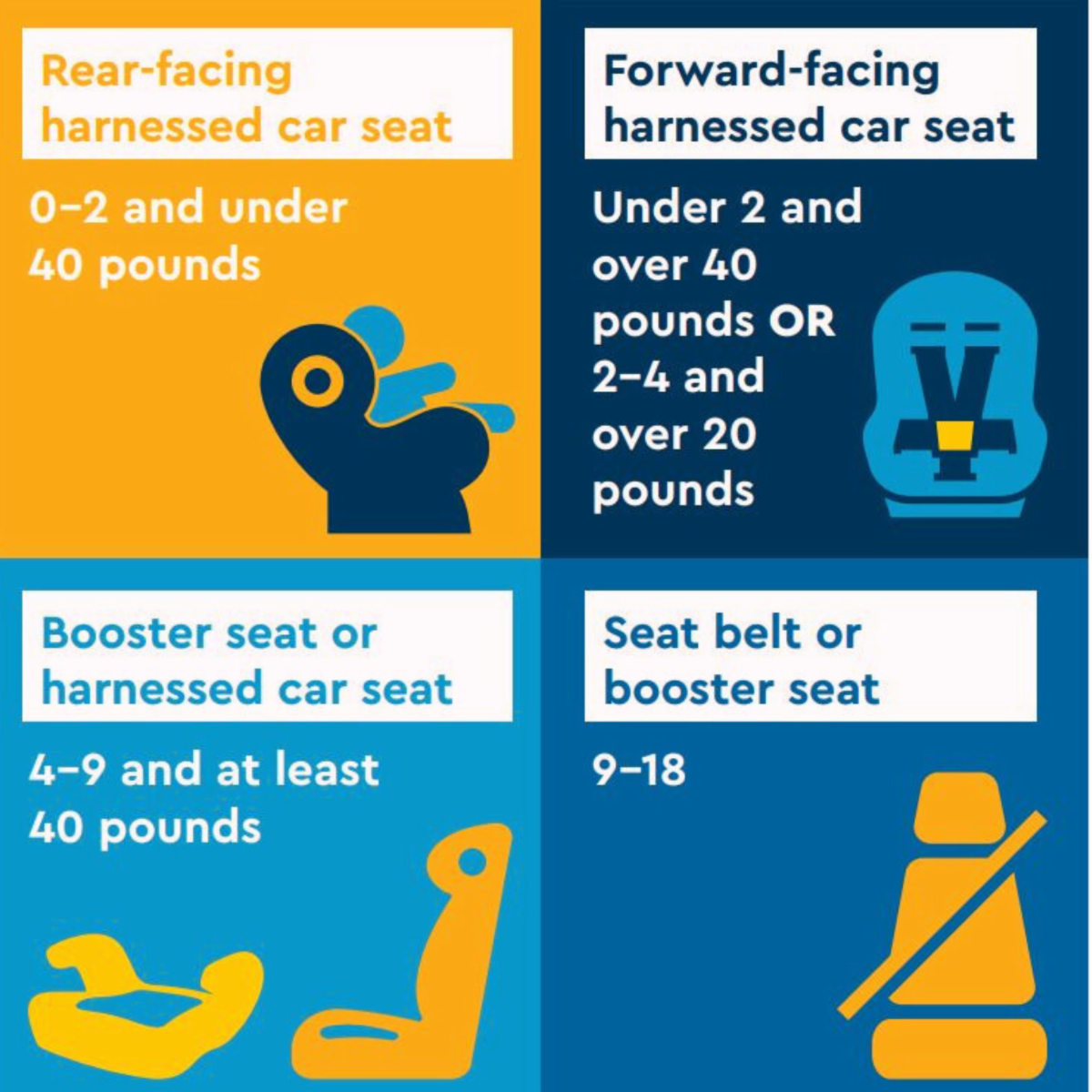Driving
Drive Safe, Arrive Safe.
Driving is a privilege that comes with great responsibility. Whether you're commuting, running errands, or going on a road trip, prioritizing safety benefits everyone on the road.
Follow these tips from the Colorado Department of Transportation by Clicking Here.
.jpeg?ixlib=rb-1.1.0&w=2000&h=2000&fit=max&or=0&s=7f314ba1471740284e61513f5694b2d0)

Important Updates to Motor Vehicle Laws in Colorado for 2025
In Colorado, motor vehicle crashes are one of the leading causes of injury and death for children. Properly using car seats, booster seats, and seat belts significantly reduces the risk of serious injury or death in a crash.
Colorado's new law aligns with best practices in child passenger safety, ensuring children are seated in the safest position, the back seat, until their bodies are better developed to withstand crash forces.
Remember, children must ride in the back seat until they are at least 9 years old, and whenever possible, we recommend keeping them in the back seat until age 13.
Colorado’s Child Restraint Law Colorado Revised Statute 42-4-236 and 42-4-237
Law: Children under age 2 must ride in a rear-facing car seat until they are at least 40 pounds. They must ride in the back seat, if available.
Best Practice: We recommend that children continue riding in a rear-facing car seat as long as possible, until they reach the highest weight or height allowed by their car seat. This gives them the best protection in a crash. Rear-facing children should NEVER ride in a front passenger seat with an active airbag. Most convertible car seats allow children to rear-face to 40 pounds or more.
Law: Children ages 2 - 4 years old and children under 40 pounds must ride in a car seat with a harness. They must ride in the back seat, if available.
Best Practice: We recommend that children stay in a rear-facing car seat as long as possible for the best protection in a crash. A child who has outgrown the weight or height limit for rear-facing in their car seat should use a forward-facing car seat with a harness for as long as possible, until they reach the highest weight or height allowed by their car seat. Using the tether on a forward-facing car seat is important, so read your car seat and vehicle manuals for proper use.
Law: Children ages 4 - 9 years old who are at least 40 pounds must ride in a car seat with a harness or a booster seat. They must ride in the back seat, if available.
Best Practice: We recommend that children stay in a car seat with a harness as long as possible for the best protection in a crash. A child who has outgrown their car seat with a harness by weight or height should use a booster seat until the car’s lap-and-shoulder seat belt fits properly, typically when they have reached at least 4 feet 9 inches in height and are between 10 and 12 years of age.
Law: Children ages 9 - 18 years old must use a vehicle seat belt or a child restraint.
Best Practice: The driver and all passengers in a car should always be properly buckled up, either with a car seat, booster seat or seat belt. Your child should continue to use a booster seat until they are able to answer “yes” to all 3 of these questions:
1. Is your child tall enough to sit against the vehicle seat back, with their knees bent at the edge of the vehicle seat without slouching, and stay in this position comfortably during the entire trip?
2. Does the shoulder belt lie across the middle of the chest and shoulder, not against the neck or face?
3. Is the lap belt low across the hips and pelvis?
All children younger than 13 years should ride in the back seats of cars. The safest location for any child is in the back seat.
Why we recommend meeting with a Child Passenger Safety Technician:
1. Review Proper Installation: They check that the car seat is securely and correctly installed according to the car seat manufacturer's instructions and your vehicle's specifications.
2. Identify the Correct Fit for Your Child: They verify that the harness is properly adjusted to fit your child’s size, weight, and developmental stage.
3. Provide Updated Information: They can help you identify if your car seat is expired, recalled, or inappropriate for your child’s age, weight, or height.
4. Parent Support: Technicians teach caregivers how to install and use the car seat confidently on their own, promoting long-term safety practices.
Another new law expands the ban on using cellphones beyond just texting. It now includes holding or manually using a phone or other mobile device for voice calls or any other reason, requiring all drivers to use a hands-free device. This will hopefully reduce the number of distracted driving accidents that occur.



